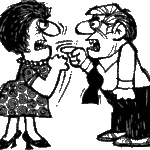Looking for meal planning advice? These tips can help make your process easier, more efficient, and—most importantly—less stressful.
Simple Meal Planning Advice
Looking to shed a few pounds? Deciding how to best eat one’s daily allotment of calories can be tricky, though once decided, consistency yields the best results. There are several scenarios for dividing up the daily bread: one to two large meals (the skipping meals philosophy), three reasonable meals and two small snacks, and six small meals are three options dieters face.
Skipping meals is never recommended when trying to lose weight. The body adores being fed often. If not fed often, the body will shift its calorie burning capacity (metabolism) down. Thus, what is eaten at 1-2 large meals is more likely to be turned into fat. Plan on eating often so that your body learns to expect food at certain times-this keeps your body from feeling as if it is “being starved” and your metabolism will burn calories at a faster rate.
How often is often enough? Metabolism research reports that eating every 3-4 hours is the best way to burn calories efficiently. This research also tells us that the best way to get one’s metabolism going is by eating breakfast, preferably within one hour of rising. If you combine these two postulates of metabolism research, you have the start of your daily allotment plan.
Are you a morning eater? If so, plan on eating a good sized breakfast (300-500 calories). Make sure that you include a high quality protein source. Great examples are: eggs, nut butters, low-fat cheese, low-fat milk or yogurt. Skip high fat protein sources like bacon, sausage and breakfast sandwiches made with extra fat.
Is eating anything within one hour of rising a foreign concept to you? Start small with the breakfast idea, gradually adding more calories to your meals/snacks as the day goes on. Perhaps for you, a small breakfast, a mid-morning snack and a moderate lunch would be the way to go. Could you handle a piece of toast with peanut butter, just to get things going? A piece of cheese toast? It doesn’t have to be much-it just needs to “break the fast” to get your calorie burning pathways churning.
Once you have determined the best breakfast plan, look at the rest of your day. Do you need a mid-morning snack to keep you from over indulging at lunch? These are very important considerations for meal and calorie planning. If a 200 calorie snack keeps your urges under control, then plan for such a snack. Get used to having pieces of portable fruit, like bananas, apples, pears and oranges and healthy granola bars at the ready. Anticipate hunger spots in your day, and feed yourself at these times. Again, feeding your body often and consistently burns calories efficiently.
The same line of thinking applies for afternoon. The “three o’clock hungries” can lead to a high calorie, large dinner if not stopped. Putting off hunger only leads to over eating, so anticipate and plan. Experts advise that your dinner be smaller than your breakfast and lunch, as our dinner calories tend to be the ones we take to bed with us. Beware of this. Eat smaller dinners, or divide your evening calories into a small meal and a healthy snack. Feeding your body through the day will make it easier to eat reasonably at night.
Feed your body often with proper fuel. Reward your hard working body with gifts of healthy foods every 3-4 hours, and watch how it responds to you. You will discover energy you didn’t know you had, clarity of thought at times when you are used to being blurry, and fewer pounds to carry around. Enjoy!





